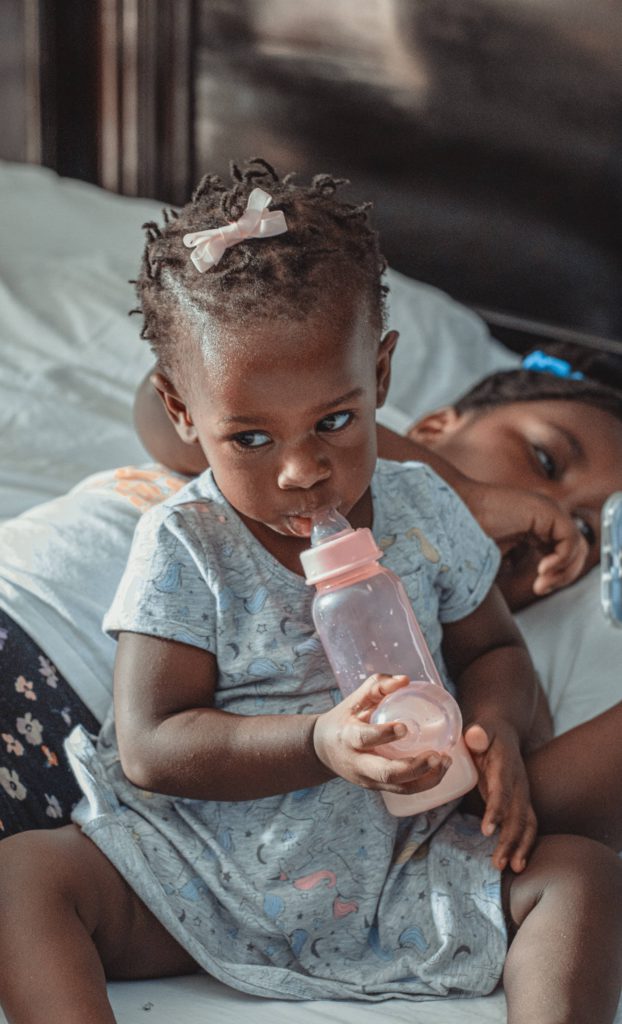Beatrice’s daughter kept falling ill.
Regardless of all the care and attention she got from her parents, the painful episode just didn’t stop. After another one of these episodes, the doctor asked Beatrice if her daughter was a sickler.

Of course, she had no answer to this question.
After a simple genotype test, the results showed that Beatrice and her husband were both AS and their daughter, SS.
In this article, we’d answer every question you have about genotype and the best time to confirm your baby’s genotype. In addition, we’ve added a few tips on genotype compatibility just for you.
First, What Is Genotype?
All things being equal, genes define and determine our character, behaviour, and personality peculiarities.

They determine the physical and genetic composition of a person including colour, hair type, height, behaviour, and even susceptibility to illness among others.
The genotype is a set of genes containing some specific info about the genetic composition of an individual. In this case, we are referring to the genotype of haemoglobin, the protein that carries oxygen in our red blood cells.
There are three common human haemoglobin genotypes. These are AA, AS, and SS. Other forms of genotype include AC, SC and CC.
Do I Need To Know My Partner’s Genotype?
The earlier you and your partner confirm your genotype, the better it is for everyone.
This will help you know if you are compatible genetically. Incompatibility put you at risk of giving birth to sickle cell (SS) genotype.
When Can I Check My Baby’s Genotype?
Depending on your location, the answer is simple; Whenever you’re ready. It is even possible to confirm a baby’s genotype before birth. This can even be done as early as the 14th to 20th week of pregnancy.

On the other hand, the rules are different in Nigeria.
Due to the fact that there is no neonatal (pre-birth) screening program for sickle cell disease in Nigeria, patients are only diagnosed when they show symptoms six months after birth.
The main reason for checking genotype before birth is to know whether your baby is a sickle cell carrier or not. Early diagnosis is helpful in the management of the dreaded sickle cell disease.
However, prevention is more helpful. That’s why you should confirm your genotype and your spouse’s before marriage.
Checking Your Baby’s Genotype Before and After Birth
It is very possible to know your baby’s genotype during pregnancy.
Knowing your baby’s genotype before birth has been shown to improve the quality of life and reduce the death rate among individuals with sickle cell disease. Genotype can be checked between week 14 and 20 of pregnancy.
In Nigeria, there is no neonatal screening program for sickle cell disease and patients are only diagnosed when they show symptoms after birth.
After birth, the genotype of the baby can be confirmed after 6 months. This is because at birth, HbF (Haemoglobin F ) level is very high and the main haemoglobin of the child does not manifest until after six months even though they are present at birth. (HbF is the foetal haemoglobin the baby’s blood cells use in the womb which is still present at birth).
Therefore, six months after birth, your baby’s haemoglobin cannot be accurately determined.
Tips on Compatibility
Knowing your genotype is important. This will guide your choice of a partner.
Here’s a simple compatibility chart to guide you:

It is possible to marry someone with an incompatible genotype and have your babies through a combination of preimplantation genetic testing (PGT) and IVF (Invitrovertilisation). This is done by a fertility specialist in a specialised centre and comes with at a relatively significant cost.
Final words
It’s possible to check your baby’s genotype before birth and six months after birth. Nonetheless, why go through all that hassle when you can easily prevent the sickle cell disease by being with a genetically compatible partner? Having a child with sickle cell disease sets up your child for a number of health challenges which equally affect conception and pregnancy.
REFERENCES
- Chukwu BF, Ezenwosu OU, Eke CB, Chinawa JM, Ikefuna AN and Emodi IJ (2014). What Factors Influence the Age at Diagnosis of Sickle Cell Anemia in Enugu, Nigeria? Journal of Blood Disorders and Transfer. Accessed on 21st September 2020 from https://doi:10.4172/2155-9864.1000231
- Akodu SO, Diaku-Akinwumi IN, and Njokanma OF (2012). “Age at Diagnosis of Sickle Cell Anaemia in Lagos, Nigeria.” Mediterranean Journal of Hematology and Infectious Diseases. Accessed on 21st September 2020 from https://www.ncbi.nlm.nih.gov/pmc/articles/PMC3552728/
- Okoduwa, S.I.R.. (2013). Blood Group and Genotype Compatibility. Info. Emerald Publishers (1) 84-87.

